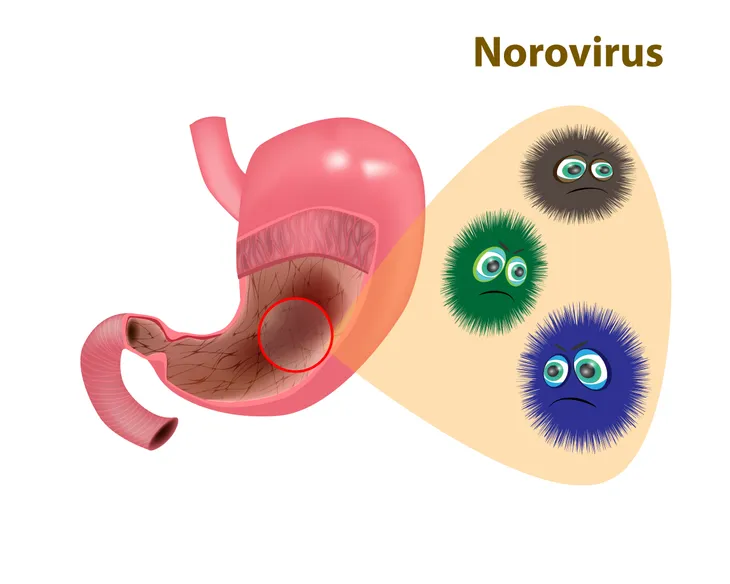We’ve all been there before. Your stomach starts gurgling and gargling which is never a good sign! First come the cramps, then diarrhea, and finally a wave of nausea. What is the source of this upset stomach? It could be a virus, but it could also be bacteria or parasites from ill-prepared or rotten food.
Both can cause similar symptoms, but there are some key differences as to how your body responds to the stomach flu (which is actually inflammation called gastroenteritis) and food poisoning. Knowing which one is causing your tummy woes can also help you get the right treatment. So, let’s take a look at 12 things to know about the differences between food poisoning and stomach flu.
Signs of Stomach Flu
Generally, stomach flu symptoms come on rather slowly compared to food poisoning symptoms, and they reach less high peaks as far as illness is concerned. However, that doesn’t mean gastroenteritis, described by Healthline as inflammation of the stomach and intestines, isn’t unpleasant.
The source notes symptoms of a stomach bug include diarrhea, fever, vomiting, abdominal cramps, joint stiffness, and even weight loss.
Food Fever
Meanwhile, food poisoning can pack a more violent punch to your gut. Healthline explains some of the symptoms of food poisoning can overlap with symptoms of stomach flu, such as the diarrhea and fever. Headache and sweating are also telltale markers of food poisoning.
However, there can be other more extreme and alarming symptoms associated with eating tainted food, which can include eye swelling and difficulty breathing, according to Healthline. In more serious cases, you may also have bloody stool or vomit, as well as pass out.
Incubation Period
Another way to tell the difference is by how quickly the illness comes on after being exposed to it. If you’re exposed to a virus that causes the stomach flu, you’ll usually start to notice symptoms 24 to 48-hours after ingestion, according to Healthline.
On the other hand, if you’ve eaten food that is contaminated with bacteria, viruses, or parasites, you will likely start having troubles 2 to 6-hours after ingestion, adds the source. So if you’re feeling very sick to your tummy, think back to your last meal and its timing as clues.
Norovirus and Food Poisoning
According to SELF, the norovirus is particularly nasty on the stomach and is actually the most common food-borne illness in the country. This virus hides in “raw, ready-to-eat produce, shellfish, and contaminated water,” warns the source.
The source says if you’re having “projectile vomiting like that girl from The Exorcist,” then the culprit is likely norovirus, especially if you are also experiencing bad stomach cramps with it. However, just because you’re not having projectile vomiting doesn’t mean you aren’t dealing with another food pathogen.
Causes of a Stomach Bug
Women’s Health explains that it’s a bit more complicated than food poisoning being caused by food, as the stomach flu is usually the dirty work of a virus. “The fork in the road appears when you start considering how you’re exposed to that bacteria or virus,” says the source.
Gastroenteritis can be passed on by any type of exposure, “such as exposure to infected people, bodily fluids, clothes, surfaces, and food,” notes the source. The most common viruses associated with stomach flu are norovirus and rotavirus.
Recipe For Food Poisoning
Women’s Health says you’re correct to assume that food poisoning is the result of ingesting a foodborne pathogen. As we noted before, norovirus is commonly associated with gastroenteritis and may have the most unpleasant symptoms.
However, norovirus is not the only bad thing that can creep into your system if you’ve eaten questionable food. It could also be bacteria, such as Salmonella, Campylobacter, Clostridium perfringens, E. coli, or Staphylococcus aureus, which are pathogens that can cause food poisoning.
Dehydration Danger
It doesn’t matter whether you have the stomach flu or food poisoning, constantly running to the bathroom can deplete your fluid reserves pretty quickly. Dehydration then can become a complication, which can land you in the hospital in some cases.
Signs of dehydration can include dry mouth, dizziness, and pee that is dark yellow in color, adds SELF. It says that plain water is fine, but you can use an electrolyte solution, such as Pedialyte, to balance out nutrients that you’ve lost. Caffeine-free sports drinks can also be useful.
Debugging the Tummy
The treatments for both types of illnesses vary. For the stomach flu, eating specific foods can help. Healthline said the biggest concern for those with a stomach virus is dehydration, so follow the hydration suggestions we just gave you. “For best results, drink about 2 to 4-ounces every half hour to an hour,” it adds.
If you think you can handle it, start by slowly adding “bland” foods to your diet, such as whole grains, bananas, apples, or plain yogurt, suggests the source. Stay away from alcoholic and caffeinated beverages, as well as dairy and spicy foods, which can all agitate the problem.
Treating Food Poisoning
Heathline says you should be calling a doctor if you notice blood or pus in your stool or vomit, or if you’ve had diarrhea lasting longer than 5-days (for adults) and 2-days (for young children).
A mild case of food poisoning may respond well to rest and fever-reducing medications such as over-the-counter acetaminophen (Tylenol). A severe case of food poisoning may require antibiotics.
How to Prevent Stomach Flu
The viruses that cause the stomach flu are not actually related to the influenza virus (flu), so there’s, unfortunately, no vaccine that can help keep it at bay. “Antibiotics will not help treat the stomach bug because it’s a virus and antibiotics treat bacteria,” adds Healthline.
The obvious prevention method is to avoid those you know who have the virus, which is not always possible. If you do come down with a stomach bug, wash your hands often and stay away from colleagues at work or school for at least 3-days after which you should feel better.
Dodging Food Poisoning
You can’t control the preparation of food if you’re eating at a restaurant, so try to stick to reputable establishments and hit the more popular spots if you’re traveling. However, if you’re eating at home, there are measures you can take.
These measures include making sure you sanitize food preparation surfaces and utensils and keeping your hands clean. Also, you should follow the guidelines for internal meat temperature (e.g., 165-degrees Fahrenheit for chicken), and if you see food in your fridge that you’re not sure about, throw it out as a precaution, says Healthline.
You Can Have Both
In some unlucky cases, you might actually be dealing with both food poisoning and the stomach flu (although it is rare), says SELF. That’s sometimes the case if you pick up norovirus from a contaminated food source. “That basically means you got the stomach flu from a food-based source,” it explains.
However, the other clues such as the length of time it took the illness to set in could help you distinguish which one you’re dealing with, so you get the right treatment, it adds.















